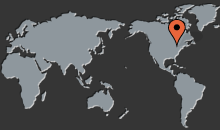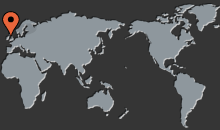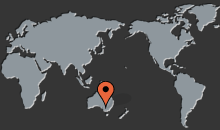MiniFAB News
Latest Updates from MiniFAB
CEO Report - MiniFAB Newsletter Edition #12 November 2013 NOV 2013
Last month, Australia voted for a change in government at the same time that the US decided to shut down its government. Thankfully the US government shutdown is now just another bookmark in history. Nonetheless, the core issue of government spending limits and the provision of essential services such as health and aged care are concerns shared by both governments, and of course many other countries too.
I attended the Health2.0 Conference in San Francisco at the time of the US government shutdown. It also coincided with the creation of new 'Obamacare' health insurance exchanges that will significantly expand the size and reach of health provision in the US. Health2.0 was a very interesting meeting where 2000+ delegates actively discussed issues related to the mega-structure of health care and service delivery. It is obvious to all that the US system has serious issues associated with fragmentation, huge variation in cost and quality and a crippling lack of data interoperability. However these challenges have stimulated an overwhelming array of innovations championed by entrepreneurs, with solutions ranging from cute smartphone apps to sophisticated "Big Data" analysis tools.
For Indu Subaiya, CEO of Health2.0, the seven deadly sins of the US health system are:
1) Too much testing driven by the reimbursement system
2) Confusing and opaque hospital charging systems
3) Health Insurers with vested interests driving perverse behaviour
4) Unintelligible pharmacy benefit management (PBM) system
5) Hospital Electronic Medical Record (EMR) data not shared to protect market share
6) Patient medical data not (quite) accessible to patients
7) End of life care too costly and often futile
Future trends are obvious for all to see. The volume of health data will explode and patients will increasingly expect that physicians use, or at least note, much of this personal data. Individual data trackers ranging from WiFi enabled bathroom scales through to home-use blood analysis devices will generate masses of data. The boundary between regulated and non-regulated 'diagnostic' devices will be challenged as developers come up with devices that extend hospital care into the home on the one hand, and provide tools for wellness-focused individuals on the other. It is not clear how this will shake out into an integrated health system, but what is certain is that the system will not look anything like the one we have become accustomed to. That is one reason why the new Australian Government's decision to split Health from Aged and Disability care is concerning. The US system shows us how disabling fragmentation can be.
More optimistically (and a lot more fun too!) was the final judging and announcement of the winner of the $2.2M Nokia X-Prize global competition at Health2.0. Congratulations to the winners, Nanobiosym Health RADAR and to the five Distinguished Award Winners. Each of the 12 finalists showed game-changing innovations in health sensing technology, including the wonderful Programmable-Bio-Nano-Chip from Rice University, which MiniFAB is pleased to be associated with. You should certainly have a look at the range of exciting life-science competitions available at X-Prize. At MiniFAB we are seeing more and more examples of innovation stimulated by prizes, philanthropic foundations and novel government programs as people get together to create innovations that will truly have a positive impact on the lives of others, and will, in their own way, contribute to the seismic change to health care that we will see over the next decade.
Erol Harvey - CEO

In Memoriam- MiniFAB Newsletter Edition #12 November 2013 NOV 2013
It is with great sadness that we note the passing of MiniFAB Director, valued colleague and dear friend, Professor Ron Lawes. A larger than life character, Ron was one of the pioneers of microengineering who has left a lasting impression on the subject. He was a treasured mentor and colleague who was fearless in his views and robust in his arguments. Sometimes contentious, Ron was always generous with his time and shared an infectious enthusiasm for the advancement of the technology and its commercial application.
Ron was intellectually rigorous and often playful. He loved to push the computational capabilities of Microsoft Excel to the limits by creating complex spreadsheets as varied in application as the calculation of the energy dose for electron beam lithography and volume cost modeling for semiconductor based MEMS through to an analysis of the global impact of the feet of ants and the scaling laws for the attention span of insects as applied to conference presentations.
Professor Lawes was a keen supporter of many things, the English Cricket Team, track and field athletics, MANCEF, and importantly of the creation of MiniFAB. He provided valuable early mentoring in the establishment of our business model and has been a Board Member of MiniFAB since its inception. Ron was Director of Engineering at the Rutherford Appleton Laboratory and the Founding Director of the Central Microstructure Facility (CMF) until he retired in September 2003. He continued his scientific career as a Visiting Professor both at Imperial College, London and at Birmingham University. Professor Lawes was a Chartered Engineer, a Chartered Physicist, a Fellow of the City and Guilds Institute, a Fellow of the Institute of Physics and the Institution of Electrical Engineers and a Fellow of the United Kingdom's Royal Academy of Engineering (FREng).
Ron died in hospital in Oxford, UK, on Sun 3rd November surrounded by his loving family. He will be greatly missed by them and a considerable network of friends from around the planet.
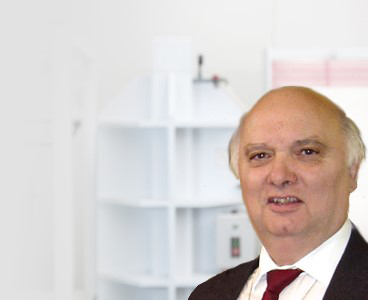
FAB People - MiniFAB Newsletter Edition #12 November 2013 NOV 2013
Welcome to FAB People; a chance for you to get to know the team that makes MiniFAB the world-leading custom development and manufacturing company it is. Each edition we'll speak with one of MiniFAB's expert engineers, scientists, designers and business managers. Today we meet Business Development Manager, Andrew Campitelli.
Andrew's focus is on building business relationships with clients, creating product development strategies and nurturing new business opportunities. Prior to joining MiniFAB, Andrew established and led the Biosensor Group at IMEC in Belgium, a world-leading research Centre in nano-electronics and nanotechnology. Andrew originally trained as an Engineer, with a PhD in Engineering (RMIT, Melbourne, Australia) and post-doctoral stage (CNRS, France) specialising in microsystem based biosensors for diagnostic applications.
MiniFAB has completed close to 1000 projects, you would have been involved, to varying degrees, in close to all of these. What is your favourite part of the product development process?
I really enjoy working with our clients at the very early stage in developing strategies to help them translate their product requirements, visions and aspirations into real products. Knowing that we are mapping out plans and processes to help develop the next big thing in medical devices is a huge buzz that I still get a kick from even after all these years.
It is the nature of MiniFAB's business to be on the cutting edge, but particularly in your role you are constantly dealing with 'never before' concepts. Have you ever been surprised by a client's product or technology?
I am always amazed at the new technologies that our Clients are coming up with, the level of creativity and innovation is truly world class, especially in the area of medical devices and diagnostics. We often see leading edge technology being applied in a new way in another field, such as mobile phone technology being used in the medical diagnostics applications, this is very cool.
Tell us something about MiniFAB that you wouldn't read on our website.
MiniFAB is more than a company. MiniFAB is about great people working together providing the best services and quality for it's clients, in a very friendly and open environment. Everyone in the company is part of 'Team MiniFAB', and our Clients usually get exposed to the full spectrum of staff from our Engineers right through to our CEO and Executive Chairman (whom are famous for tuning up to project meetings and knowing every detail of the project).
Looking at the broader industry, what innovations are you excited about?
I'm biased towards any new technology or innovation that advances medical devices and diagnostics. Platforms that integrate multi-functionalities to get a better understanding of a particular complex disease (such as cancer) are very exciting right now. We are also seeing a lot of new exciting direction towards cellular, molecular and protein based diagnostics.
You spend a lot of time each year representing MiniFAB at conferences; any tips for surviving conventions?
Smile! It is amazing how much fun it is to meet new people at Conferences and to learn all about their new ideas and projects.
You've been with MiniFAB for close to 9 years; any favourite memories?
Lots and lots of fab memories. Too many places, event, dinners, meetings, and good friends. Working at MiniFAB is like working with family, we all get along and really enjoy what we do. One fond memory: meeting Iron Man at a Trade Show in LA last year, my 6yr old was most impressed.
I know you have a great limoncello recipe; is it your bioengineering training that makes the difference? What's the secret?
My Italian family receipe; I have been sworn to secrecy by my mother. Lets just say it has some lemons and a drop (or two) of grappa in it…
Connect with Andrew on LinkedIn
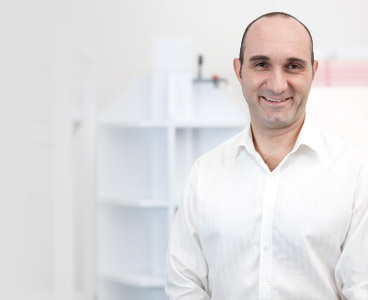
MiniFAB Newsletter Edition #12 NOV 2013
Follow the link here to read the MiniFAB November Newsletter, our latest edition.
In it you'll find information about MiniFAB at AMP, Erol's CEO report, a memoriam to our friend, Dr Ron Lawes, and other MiniFAB updates.
Happy Birthday MiniFAB OCT 2013
On this day 11 years ago MiniFAB opened its doors for the first time.
From a small start-up to a world-leader in product development and manufacturing of micro-engineered products, MiniFAB has travelled a rewarding, challenging and sometimes winding road to get here. Last year we marked 10 years of MiniFAB with a series of 1-2 minute videos featuring interviews with staff and glimpses into the inner workings of 1 Dalmore Drive, MiniFAB's head office. We thought they warranted a second outing.
The team reflects on 10 years of MiniFAB, what we've achieved and our company's reputation in the global market. In Project Engineer Brody Payne's words, "When you actually stand back and look at what we've achieved, it's really quite incredible".
Watch the team reminisce on how the company's grown, the dawn of MiniFAB's quality system and taking the TearLab product from a concept to manufacturing over 100,000 parts per month.
In the last of our anniversary videos the team talks about MiniFAB's tight-knit community, culture as we look towards our company's exciting future. "MiniFAB is definitely the best team I've worked with. There's no individuals as such, we're all working together for the company and it's a culture," says Quality Manager Catherine Willis.
CEO Report - MiniFAB Newsletter Edition #11 May 2013 MAY 2013
The Australian medical diagnostics sector represents around $9B out of a global medical device and imaging market of $280B. Both of these numbers are growing rapidly, and with its well-established funding and rebate schemes the Australian market is highly attractive for medical device and diagnostic businesses.
Australia is the fourth largest market for medical devices by revenue and the third largest for diagnostics within Asia Pacific according to AusBiotech. Australia joins Japan, China, South Korea and India in the top five, though our population is easily the smallest of the set.
Australians tend to regard our $11B domestic automotive manufacturing market with some passion, which financially at least, is very much in the same league as medical devices. So if passion is proportional to financial size, then the Australian medical diagnostics sector is being short-changed. There is a robust base of high quality instrument and device developers in Australia with experience in developing products and solutions for large and very large clients around the world.
Recognising our domestic expertise, the Victorian State Government is running the very successful Technical Voucher Program (TVP), which supports local companies, facilitating access to the State's technology skills and services for product development.
In a welcome update to the program, the State Government is now allowing international applicants to receive vouchers to work with Victorian service providers. MiniFAB was delighted to learn recently that Kiwi company Zygem has been awarded a voucher to access our team's expertise in microfluidics, diagnostics and manufacturing. Zygem is developing a device using molecular detection for rapid, mobile, forensic DNA fingerprinting.
Another TVP recipient MiniFAB will be teaming up with is IntelliMedical Technologies. The Victorian company is developing the IntelliWire, a steerable micro-guidewire for use in medical procedures. With a diameter of just 0.014" (0.36mm), the robotically steerable guidewire is the first of its kind and will allow cardiologists, neuroradiologists and other medical specialists to navigate the smallest and most tortuous of arteries and lesions faster and more effectively.
If you're looking for a development partner for your product, learn more about the program here or contact Andrew 's experience and expertise through a TVP voucher.
Erol Harvey - CEO

Where there's a Mill, there's a way- MiniFAB Newsletter Edition #11 May 2013 MAY 2013
The combination of a new tool, micron accuracy and reproducibility is sure to enthuse any engineer, and MiniFAB's team is no exception.
Our development and manufacturing teams are excited about the company's new precision milling equipment and our improved milling capabilities.
Results from internal tests show improved reproducibility, higher accuracy, superior surface finishes and lower cycle times.
"By investing in our internal capabilities, MiniFAB is growing the rapid prototyping services we provide our clients," said Manufacturing Manager, Bas Garst.
A number of our clients are taking advantage of the flexibility and speed of this tool, using our mills to create features on a micron scale.

Partner News - MiniFAB Newsletter Edition #11 May 2013 MAY 2013
Monitor TearLab's market performance through their new iPhone App available to download through the Apple Store.
"We hope and trust [The TearLab IR App] will prove to be an essential new tool for shareholders, analysts and potential investors as they monitor our progress," said TearLab's CEO, Elias Vamvakas.
Check it out here
MiniFAB Newsletter Edition #11 May 2013 MAY 2013
Follow the link here to read the MiniFAB May Newsletter, our latest edition.
In it you'll find information about MiniFAB at AusMedtech and AACC 2013, Erol's CEO report, news on our milling capabilities and an update from our partners.
Five Tips for Successful Commercialisation of Lab-on-a-chip Diagnostics Mar 2013
Erol was caught on tape last year at the Lab-on-a-chip World Congress. Watch his presentation on ‘Five Tips for Successful Commercialisation of Lab-on-a-chip Diagnostics’. Be sure to turn the volume up.
MiniFAB Press Releases: February 2013 FEB 2013
MiniFAB Newsletter Edition #10 December 2012 DEC 2012
Follow the link here to read the MiniFAB December Newsletter, our latest edition.
In it you'll find information about MiniFAB at SLAS 2013 where we'll be at Booth #426, our CEO report, information on bonding and an update from TearLab.
MiniFAB Press Releases: November 2012 NOV 2012
MiniFAB Press Releases: September 2012 SEP 2012
MiniFAB Newsletter Edition #9 July 2012 JUL 2012
Click here to read the July Newsletter
In it you'll find information about MiniFAB at AACC 2012 where we'll be at Booth 2363, our CEO report, information on MiniFAB's approach to tackling on-cartridge reagent storage and Erol Harvey, MiniFAB's CEO and 2012 Victorian Manufacturing Hall of Fame's Enabling Technology Entrepreneur of the Year.
MiniFAB Press Releases: May 2012 MAY 2012
MiniFAB Newsletter Edition #8 February 2012 FEB 2012
Click here to read the February Newsletter
In it you'll find information about MiniFAB at MD&M West 2012 where we'll be at Booth 828, our CEO report, information on TearLab’s Regulatory successes, and an update on the bionic eye project.
The TearLab Osmalarity test overcomes two key regulatory hurdles
FEB 2013Early this month TearLab announced that they had received communication from the FDA indicating that the Agency had approved its petition for a waiver under CLIA for their Osmalarity System. The good news kept coming last week with the Centers for Medicare and Medicaid Services (CMS) publishing instructions for the reimbursement rate for the TearLab Osmalarity test to be revised to $23.25 per eye, across all US States. "With both the CLIA Waiver and uneven reimbursement obstacles now overcome, we can look forward to the adoption curve of this groundbreaking test steeping significantly in 2012," said TearLab’s CEO, Elias Vamvakas.
"This is great news for TearLab. Having both the CLIA waiver and reimbursement will allow many more people to use the diagnostic system, and we at MiniFAB are looking forward to ramping up our production to meet the increase in demand," said MiniFAB's Manufacturing Manager, Bas Garst.
MiniFAB currently manufactures 70,000 nanofluidic test cards per month for TearLab.


